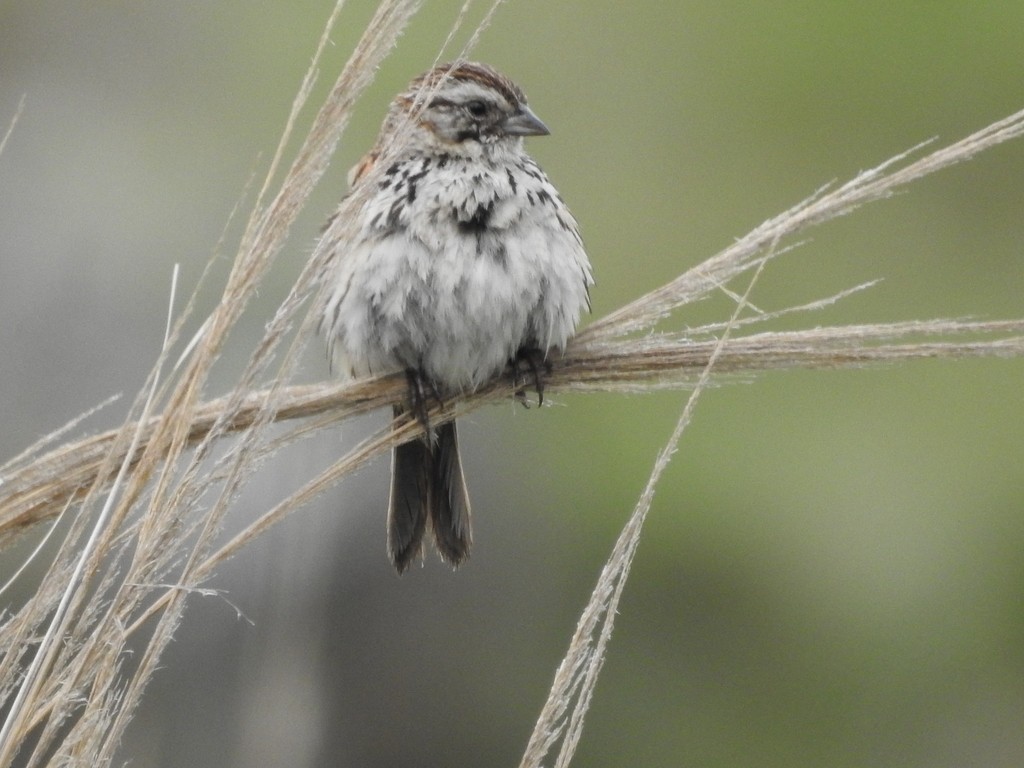Sierra Madre Sparrow
A species of Sierra Madre Sparrow Scientific name : Xenospiza baileyi Genus : Sierra Madre Sparrow
Sierra Madre Sparrow, A species of Sierra Madre Sparrow
Botanical name: Xenospiza baileyi
Genus: Sierra Madre Sparrow
Content
Description General Info
 Photo By marcelo_aranda , used under CC-BY-NC-4.0 /Cropped and compressed from original
Photo By marcelo_aranda , used under CC-BY-NC-4.0 /Cropped and compressed from original Description
The Sierra Madre sparrow (Xenospiza baileyi), also known as Bailey's sparrow, is an endangered, range-restricted, enigmatic American sparrow. It is endemic to Mexico and is threatened with extinction through habitat loss. 
Size
16 cm
Nest Placement
Ground
Feeding Habits
Sierra Madre Sparrow consumes moths, flying ants, earthworms, caterpillars, and seeds from grasses and oats. It forages on the ground, exhibiting a preference for a variety of both insects and plant material, indicative of its omnivorous diet.
Habitat
Sierra Madre Sparrow inhabits subalpine bunchgrass meadows in montane regions, preferring open grasslands with a mix of sparse trees and shrubs. These areas are typically characterized by tall grasses like Festuca and Muhlenbergia. Surrounding the meadows are Montezuma Pine at higher elevations. Although they adapt to semi-open grasslands, they avoid heavily grazed areas, with pine forests and agricultural expanses acting as barriers to their dispersion.
Dite type
Granivorous
General Info
Feeding Habits
Bird food type
Distribution Area
The species is endemic to some mountain ranges in and near the Sierra Madre Occidental, Mexico. It is restricted to bunchgrass and marshland habitat in volcanic mountain ranges, at altitudes of 2,300–3,050 metres (7,550–10,010 ft); the lower part of the range is occupied by the northern, and the higher part by the southern population. Habitat information for the northern population is scant, with pine, oak, and Arbutus (probably Arizona Madrone, A. arizonica) trees being mentioned. Better details are available for the more extensively studied southern population. The dominant bunchgrass species are Festuca amplissima, Peruvian feather grass (Stipa ichu), a muhly grass (Muhlenbergia affinis), and Muhlenbergia macroura. Small woods of Montezuma Pine (Pinus montezumae) and (probably) Lumholtz' Pine (P. lumholtzii) occur on elevated terrain. 
Species Status
It is highly threatened due to clearance of its habitat for creating pastures. Its conservation status on the IUCN Red List is Endangered. This is because the species occurs in less than 5000 km², and its range, available habitat, and population size are shrinking (BirdLife International 2004). Despite the rediscovery of the northern population, no more than a handful of individuals are known to remain, and further research to locate additional subpopulations is urgently needed. In any case, the species will probably be uplisted to Critically Endangered soon; of the 4 subpopulations known, only one (near La Cima) seems reasonably numerous. 
Scientific Classification
Phylum
Chordates Class
Birds Order
Perching birds Family
New world sparrows Genus
Sierra Madre Sparrow Species
Sierra Madre Sparrow